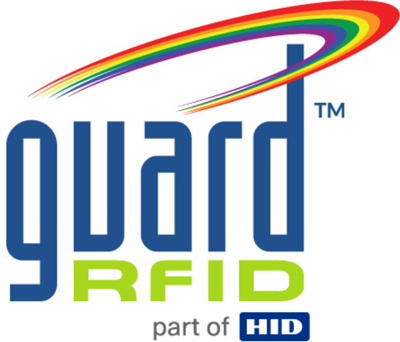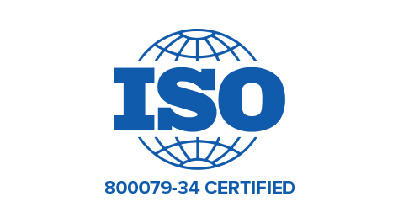There is perhaps no greater imperative for any healthcare organization than the safety of its staff. While occupational health and safety standards are constantly being reviewed, upgraded and implemented, there is always room for improvement. Technology provides one way to make an immediate and impactful difference in preventing injury and even death to staff in the healthcare environment.
Real-time location systems (RTLS) that offer a staff safety technology solution enable employees to call for help in situations where they are in imminent danger, or they are experiencing duress. A variety of healthcare organizations such as hospitals, urgent care centres and long-term care facilities are realizing the benefits of RTLS staff safety solutions to protect staff, patients and visitors.
1. Easy access and user friendly
Ease of use and accessibility are a must when it comes to the functionality of an RTLS system. In an emergency, staff are dealing with a stressful situation that commands their attention. They have fractions of seconds to call for help. There may be no time to make a call from their cell phone, and it’s possible a cry for help may not be heard. An RTLS system offers a variety of options for instant, accessible communication and alerts, even if the employee is incapacitated.
The GuardRFID Staff and Personnel tags are RTLS devices that are worn like a badge so that they can be easily accessed, and are designed for staff that need to be able to call for assistance or trigger a duress alarm.
2. Call/Duress Button Configuration Options
The Staff tags have two buttons that can be configured so that pressing either one of them will generate or cancel a call or duress alarm.
Single Button Configuration
Using the single button configuration on the Staff tag, each button (red or blue) is ascribed its own function. For example, if a healthcare worker is faced with a combative patient, they can press one of the buttons on their tag to trigger an alarm for help. The alarm is received in real-time by the GuardRFID® AllGuard® Client software and an alert is sent so that immediate assistance or security can be provided.
There are multiple alarm messaging options, including workstation alarms, email, mobile client, CCTV or voice messaging. In the event of a false alarm, the staff member wearing the tag simply presses the opposite button on the tag to cancel the alarm. The red and blue buttons can be programmed to either be a call/duress alarm or cancel alarm button.
Dual Button Configuration
A second option is to configure the Staff tag so that pressing either the red or blue button will trigger an alarm. Using this configuration, alarms can only be accepted and cancelled through the AllGuard Client software, and not the tag itself. Most deployments in healthcare facilities configure tags in this way, using both buttons as a duress call so that the user does not have to worry about which button they press.
The GuardRFID Personnel tag (PT-3) has only one button, which can also be configured to generate a call or duress alarm. Since this type of tag only has one button, alarms cannot be canceled from this tag.
3. Man-Down or Fall Detection Capability
Accidents and assaults in the workplace can happen quickly and without warning. If there is an event where a staff member is unable to reach their duress button in time to signal for assistance, the GuardRFID Staff tag can be configured to raise an alarm if the employee falls, or the tag is tilted 60° or greater. For example, if a nurse is attacked while caring for a patient and falls, the Man-Down detection capability sends out an alarm to ensure that help is dispatched. The tag can be configured to give a visible and audible alert to the user when this feature has generated an alarm, and the second button is often configured to allow the user to cancel the alarm if it was inadvertently triggered.
4. Visual and audible notifications
Staff Tags have LEDs that flash and emit an audible notification to call staff, or alert them that help is on its way in a Man-Down situation. This option is configurable, and can be turned off as well. In many deployments where Staff Safety is the primary use case, this feature is not enabled since it has the risk of alerting an attacker that a call for help has been made and may escalate the situation.
5. Locating or Evacuating Staff
In a crisis such as a natural disaster, fire or lockdown due to a security threat, it may be necessary to quickly determine where all staff are located in the organization’s facility. Using the AllGuard system, staff that are wearing an assigned tag can be rapidly located on the facility’s floorplan, whether they are stationary or moving. This system gives staff more information to help determine whether employees are safe, or whether assistance needs to be deployed to their location.
6. Intelligent Alert Handling
The AllGuard server application supports integration with a number of third-party systems, which are often utilized to implement intelligent alarm alerts and interactions. Since the tags allow an accurate real-time location of the staff member wearing the tag, alerts can be routed to other staff members that are close enough and appropriately qualified to deal with the emergency. This reduces the ‘alarm fatigue’ that is a common complaint with systems that do not have the advantage of RTLS.
7. Battery Alerts
Continuity of staff safety is important, which is why the AllGuard Client software will alert staff when batteries on a Staff tag need to be changed. There are two types of Staff tag, Active RFID (ST-3) and Wi-Fi (ST-4). The Active RFID Staff tag (ST-3) runs on two CR2016 type batteries and no special tools are needed to change them. The Wi-Fi Staff tag (ST-4) batteries can be recharged using a wireless charging dock.
Personnel tags (PT-3) have long lasting batteries can run up to a year without needing to be replaced.
For more information on how a Healthcare RTLS solution will work for your organization, contact us for a free consultation.


